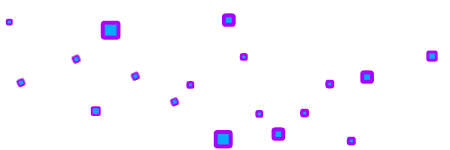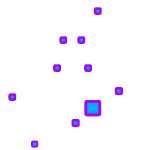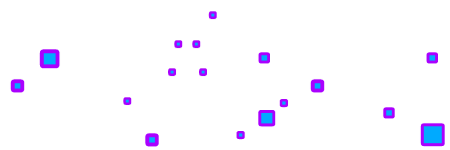CLOWN CHESS
A Chess Variant By Simon Edward JeppsDownload ~ PDF ↷ ⋱ ⋱ Chatblog ⨗
Introduction
 Clown Chess is an 8x8 variant employing a standard Classical Chess set, yet which is designed to simulate the experience of a much grander game at hand.
Clown Chess is an 8x8 variant employing a standard Classical Chess set, yet which is designed to simulate the experience of a much grander game at hand.
The title suggests something "silly" but in reality the 'Clown' is simply the name given to a new Jeppsquare version of the 'Querquisite' or 'Zelig' piece, which moves primarily according to its piece-file designation.
Whilst unlike the 'Joker' or 'Jester' piece, which also sport clown-like names yet move through imitation instead, I felt the name Clown more appropriately described this piece; and my reasons are twofold.
Firstly it behaves as a "comedic performer" ~ effectively larking around as a 'dressed-up' Knight and likewise with no move-identity of its own. Yet secondly the Clown does actually imitate, in that of course it copies the movement of the piece upon who's file it resides.
Yet as will be explained, the Jeppsquare Clown piece is a true marvel of Chess evolution, since what truly sets it apart from its predecessors is how the Clown actually comes into being.



Arise Ye Clown
In effect each player has ONE opportunity to reincarnate either ONE captured Knight or ONE Bishop ~ however, the Knight may actually re-enter the game as a Clown instead IF the player has not already "declared" one of his/her Knights a Clown.Whence a player's Knight or Bishop is first captured, it is handed back to the Player. The Player may then on any FOLLOWING turn of his/her choice (not immediately) re-enter the piece by moving 'only as a non-capturing piece' to ANY vacant square within the TWO edge-rows/files of the Player's OWN side of the board.
NOTE; a piece may ONLY reincarnate providing the last piece moved was NOT a Clown.
To signify that a Knight is now a Clown, upon its first move as Knight or when re-entering as Clown, the Player turns his/her Knight on its square to face directly AWAY from the Opponent and directly TOWARDS him/herself, the Player. This Knight-come-Clown will remain in this orientation for the remainder of the game.
Each player may ALWAYS be entitled to ONE Knight reincarnation (if not the Bishop) ~ yet how you employ this dynamic determines the powers available to you.
For example, if you have not already 'declared' a Knight a Clown then you may employ your REINCARNATED Knight to become a Clown ~ OR if you simply DON'T want a Clown in your army then you may merely reincarnate ONE Knight as just another Knight, or ONE Bishop instead.



How The Clown Moves & Captures
 The Clown Moves AND Captures according to its present piece-file designation.
The Clown Moves AND Captures according to its present piece-file designation.
In other words, the Clown imitates the abilities of the piece who's start-file it is occupying.
Before algebraic notation, we used to label files according to the piece which traditionally resides there.
So for example, in the diagram the White Clown resides on the Bishop-file and so may move AND capture like a Bishop.
The Black Clown resides on the Knight-file and so may move AND capture like a Knight.
Note however; A Clown empowered as Queen (designation d-file) may ONLY move/capture a MAX of FOUR squares in any direction!
- A player may only have ONE Clown for the entire game regardless of reincarnation.
- Only ONE piece, either a Knight or Bishop, may reincarnate ONCE in the game.
- A Knight may reincarnate as a Clown if one not already 'declared' so.
Careful, don't end up yourself the Clown!
Click image to open large ⇒



Entering Play Following Declaration
As mentioned, a player may choose to declare an already on-board Knight as a Clown, however in which case should any of his/her Knights be reincarnated, one of them can ONLY reincarnate as a pure Knight again thereafter.Yet each player may ALWAYS be entitled to ONE Knight reincarnation (if not the Bishop), regardless of its declared Clown status. For example, a CAPTURED Clown is still a Knight off-board and so, providing reincarnation has not already taken place, the declared Clown may reincarnate as a pure Knight once again.
A player MUST declare his/her Knight a Clown on its FIRST move ONLY. To do this, DURING its first move as KNIGHT, the Player turns the Knight on its destination square to face directly AWAY from the Opponent and directly TOWARDS him/herself, the Player.
NOTE; Declaring a Clown & moving a Clown are two different things. A Knight is NOT YET a Clown until after it is 'declared' so FOLLOWING its 1st move or entrance.
This declared Clown will remain in this orientation for the remainder of the game.



Entering Play Following Reincarnation
The Clown, Bishop or Knight re-enters play by moving only as a NON-capturing piece to ANY vacant square within the TWO edge-rows/files of the Player's OWN side of the board.A captured piece may NOT reincarnate into the game IF the last piece moved was a Clown.
Upon reincarnation and DURING its entrance move as KNIGHT, the Player turns the Knight on its destination square to face directly AWAY from the Opponent and directly TOWARDS him/herself, the Player.
NOTE; Declaring a Clown & moving a Clown are two different things. A Knight is NOT YET a Clown until after it is 'declared' so FOLLOWING its 1st move or entrance. Sure, this note only really matters whence on-board declaration, but is included here for completeness.
This reincarnated Knight-come-Clown will remain in this orientation for the remainder of the game.



Notation
The Clown is notated with a ' C '.A Clown being declared following a Knight's first move is notated as per usual but with a "!C" in brackets postfixed to the move proper; for example, 1. Nc3 (!C).
A Clown making its first re-entry move following reincarnation is notated as per usual but with an exclamation prefixed to the move proper; for example, #. !Cg5.
A reincarnated Knight making its first re-entry move is notated as per usual but likewise with an exclamation prefixed to the move proper; for example, #. !Nb4.
Similarly, a reincarnated Bishop making its first re-entry move is notated as per usual but likewise with an exclamation prefixed to the move proper; for example, #. !Bd2.
Yes, it is possible to have TWO Bishops of the same coloured square!



Summary
I was undecided at first whether to allow on-board Knights to be declared Clowns and this is because firstly I felt it might confuse the rules of play; however hopefully I have made it suitably easy to understand.
Yet secondly declaring an on-board Knight a Clown would be catastrophic to the position if there were not additional rules here and so I made it compulsory that any on-board Clown declaration MUST be made on the Knight's FIRST move.
Studying the diagram, we can see how White thought it "cunning" to exchange off his Bishop with the Knight in order to lure out the Black Queen. Then with his Clown quietly declared on f3, a simple advance of the d-Pawn would theoretically have Black retreating his Queen and losing much momentum.
Yet no. In fact Black identified this threat and played 4. ... d5. Yet that's not all! We see then following
5. Nf3 Black reincarnates his own Knight as Clown with 5. ... !Cb5 where it not only begins the pressure build on d4 but ATTACKS the White Clown! In turn offering the White Clown very little in ways of productive evasion.
Would Black exchange off Clowns so early in the game? A question I leave to you...
Sure in time and following wider cultural practise of this variant, I expect players will eventually choose to more often enter their Clowns later in the game and instead continue to play the Opening out more Classically.
Yet nevertheless, the positional wonders of an early-Clown revolutionize the Opening game with practically infinite possibilities. Imagine for example a declared Clown with #. Nd2 (!C). Whilst the Clown may ONLY move/capture a MAXIMUM of FOUR squares whence empowered as Queen, this newfound position poses very interesting connundrums, should Black fall asleep at the wheel!
Indeed an important factor in this game's design was the balancing of Queen-like pieces with tempo-of-material-count, else an undeclared nor yet reincarnated player would be heavily out-gunned should I allow TWO full-strength Queens in the Opening. Hence the 4-square rule.
Hitherto, Clown Chess is truly a game for all Chess Variant Clowns and indeed for all the Chess Circuses of all the world, wherever and whenever they may roam!
Thank you for reading.
Chatblog ⨗
 |  |





